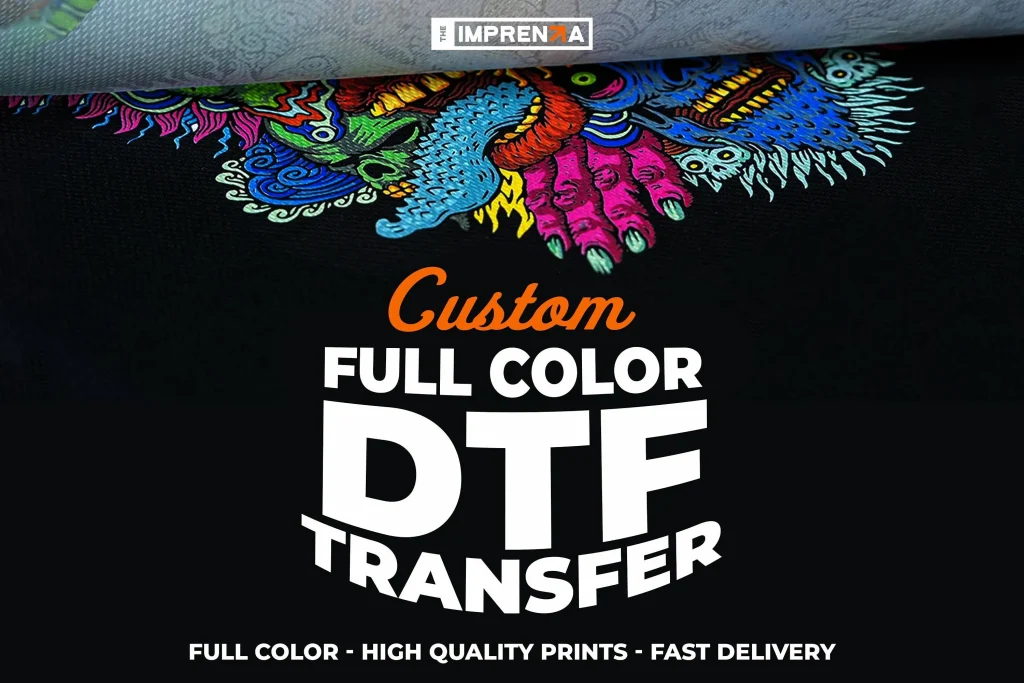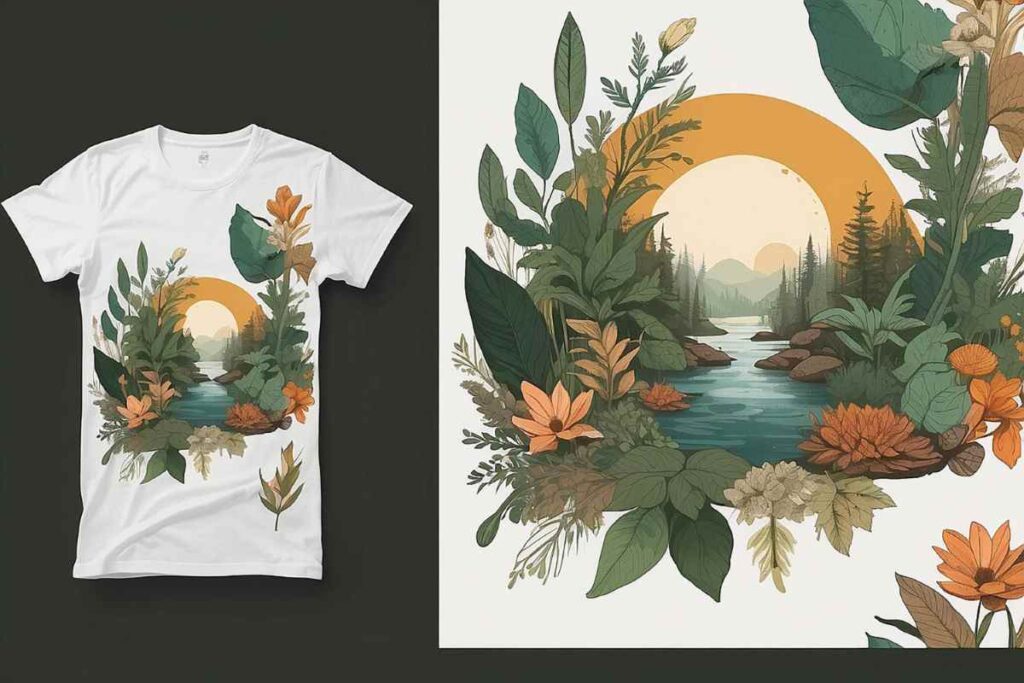DTF Transfers, or Direct-to-Film transfers, are reshaping the landscape of custom apparel printing. This innovative process allows designers to easily print high-quality graphics on a variety of fabrics, catering to both beginners and seasoned professionals alike. With the ability to achieve stunning color vibrancy and intricate designs, DTF printing is quickly gaining popularity in the world of fashion and personalized wears. In this guide, we’ll delve into the advantages of DTF transfers, including their versatility and durability, while also providing insights into how to use DTF printing effectively. Whether you’re exploring DTF printing for beginners or looking to master custom apparel printing, this resource will equip you with the knowledge you need.
Direct-to-Film printing, often referred to in the industry as DTF printing, presents a modern solution for those interested in customized garment design. This method stands apart from traditional printing techniques such as screen printing and direct-to-garment applications, offering unique advantages that cater to a wider array of fabrics. Known for its vibrant color output and ability to replicate intricate designs, this technique is gaining traction among both hobbyists and small business entrepreneurs. Additionally, the straightforward process and minimal training required make it an accessible choice for those wondering how to utilize DTF printing effectively. With the right tools and approach, anyone can join the exciting world of custom apparel creation.
Understanding the Basics of DTF Printing
DTF printing, or Direct-to-Film printing, is an innovative method that simplifies the process of transferring designs onto fabric. At its core, this technique is all about using specially formulated inks that can be printed onto a transfer film. After the design is printed, a powder adhesive is applied, which is then cured to create a professional-quality finished product. This method allows for vibrant, detailed images to be transferred onto various materials, making it an excellent choice for designers and small businesses alike.
One of the great advantages of DTF printing is its ability to handle various fabric types, including cotton, polyester, and blends. This flexibility opens up a wealth of creative possibilities for custom apparel design, allowing for unique and personalized clothing items. Whether you’re creating t-shirts, hoodies, or even accessories, DTF transfers can elevate your product offerings with exceptional quality and color accuracy.
Step-by-Step Guide to Using DTF Transfers
Starting with DTF printing involves a few essential steps to ensure successful outcomes. First, you need to invest in a DTF printer and necessary accessories such as a curing oven or heat press. Selecting the right equipment can significantly affect the quality of your prints, so it’s crucial to do thorough research on brands and models that fit your budget and needs.
Once you have your equipment in place, familiarize yourself with the software and settings needed for printing. This includes understanding how to prepare your images for printing, ensuring they’re in high resolution, and knowing how to adjust color profiles for accurate reproduction. As you gain experience, learning how to effectively utilize layers and adjustments in your designs will help you make the most out of DTF printing technology.
The Advantages of DTF Transfers for Custom Apparel
DTF transfers offer significant advantages over traditional printing methods, making them particularly appealing for those in the custom apparel industry. One of the most noteworthy benefits is the vibrant and detailed output that DTF printing is capable of achieving. The colors produced are typically richer and more dynamic, which is essential for capturing attention in a crowded market.
In addition to quality, DTF prints excel in durability. Once properly cured and pressed, they can withstand numerous washes without significant wear or fading, making them ideal for everyday wear. This resilience ensures that customers are satisfied with their purchases for a longer period, which can lead to repeat business for small apparel operations.
Recent Innovations in DTF Technology
The landscape of DTF printing technology has evolved significantly in recent years, making it more accessible to a broader audience. Affordable DTF printers have flooded the market, allowing hobbyists and small business owners to enter the custom apparel space without the hefty startup costs that traditionally accompanied screen printing or direct-to-garment methods. These innovations have streamlined the printing process and improved efficiency, enabling quicker turnaround times on orders.
Moreover, advancements in the types of inks and films available today have increased output quality while reducing environmental impact. Many newer DTF printers utilize eco-friendly water-based inks that not only deliver exceptional print clarity but also align with sustainability practices that consumers are increasingly valuing.
Essential Equipment for Perfecting DTF Transfers
When diving into the world of DTF printing, it’s essential to have the right equipment for optimal results. A quality DTF printer is a must, as this will be the main tool for creating your designs on film. It’s equally important to invest in a reliable heat press or curing oven, as the heat application is key to ensuring a successful transfer onto the chosen fabric.
In addition to the printer and heat press, you’ll need access to specialized transfer films and adhesive powders that are specifically designed for DTF printing. These materials play a crucial role in the bonding process between the design and the fabric, which ensures durability and vibrancy in the finished product. As you gain experience, considering additional tools such as a vinyl cutter for intricate designs can further expand your creative output.
Tips for Designing Effective DTF Transfers
When it comes to creating designs for DTF transfers, resolution and clarity are paramount. Ensure that your artwork is set at a high resolution (at least 300 DPI) to guarantee crisp and clear reproductions. This attention to detail will significantly enhance the overall appearance of your printed garments and ensure that the fine details of your designs are not lost during the transfer process.
Another critical aspect is color management. Familiarizing yourself with various color profiles will aid in achieving the desired vibrancy when transferring your designs onto the fabric. Understanding how colors translate from screen to print can prevent unexpected results and save resources in terms of wasted materials and time.
Frequently Asked Questions
What is DTF printing for beginners?
DTF printing, or Direct-to-Film printing, is an innovative method that allows beginners to create vibrant and high-quality custom apparel. It involves printing designs on a specialized film that is later transferred onto fabric using a heat press. This process is user-friendly, making it accessible for aspiring designers and small business owners.
How do DTF transfers differ from other printing methods?
DTF transfers stand out from other printing methods like screen printing and direct-to-garment (DTG) printing due to their versatility, vibrant color output, and compatibility with various fabrics. Unlike traditional methods, DTF printing utilizes a film and adhesive process, ensuring durability and a high-quality finish on garments.
What are the advantages of using DTF transfers for custom apparel printing?
The advantages of DTF transfers in custom apparel printing include exceptional color vibrancy, compatibility with multiple fabric types, ease of use for beginners, and durability against fading and cracking. These features make DTF printing an attractive option for creating long-lasting designs on garments.
How can beginners get started with DTF printing?
Beginners can start with DTF printing by investing in essential equipment such as a reliable DTF printer, a heat press, and the necessary films and powders. Online tutorials, forums, and community groups can provide valuable guidance for learning designs, ink settings, and application techniques.
What design tips should beginners consider for DTF transfers?
When designing for DTF transfers, beginners should ensure high resolution (300 DPI recommended) for clarity, familiarize themselves with color profiles for accurate reproduction, and explore layering effects to enhance design depth. These tips help create stunning custom apparel that showcases the potential of DTF printing.
What recent developments have enhanced DTF technology for custom apparel?
Recent developments in DTF technology include the availability of affordable DTF printers and improvements in printing efficiency. These advancements have made it easier for small businesses and hobbyists to adopt DTF transfers, allowing for high-quality, cost-effective custom apparel production.
| Key Points | Description | |
|---|---|---|
| What Are DTF Transfers? | A modern printing technique where designs are printed on a specialized film and transferred to fabric using heat. | |
| The DTF Process Explained | 1. Printing with water-based inks 2. Applying powder adhesive 3. Curing in an oven 4. Heat transferring to fabric 5. Peeling the film away. |
|
| Advantages of DTF Transfers | – High vibrancy and detail in prints – Compatible with various fabrics – User-friendly for beginners – Durable prints that withstand washing. |
|
| Recent Developments in DTF Technology | – Affordable, quality DTF printers available – Popular among DIY designers and small businesses. |
|
| Getting Started with DTF Transfers | – Invest in reliable printing equipment – Use online resources for learning – Consider cost-return strategy. |
|
| Designing with DTF Transfers | – High resolution required (300 DPI) – Understand color management – Use layering effects for vibrant images. |
|
Summary
DTF Transfers are an innovative method that has transformed the custom apparel industry, providing both beginners and experienced designers with ample opportunities to create vibrant, high-quality prints on various fabrics. This printing technique not only allows for intricate designs but also offers a user-friendly approach to apparel decoration that is both durable and versatile. As advancements continue to make DTF Transfers more accessible, creative enthusiasts and entrepreneurs can harness the power of this method to explore new artistic directions in custom fashion design.


